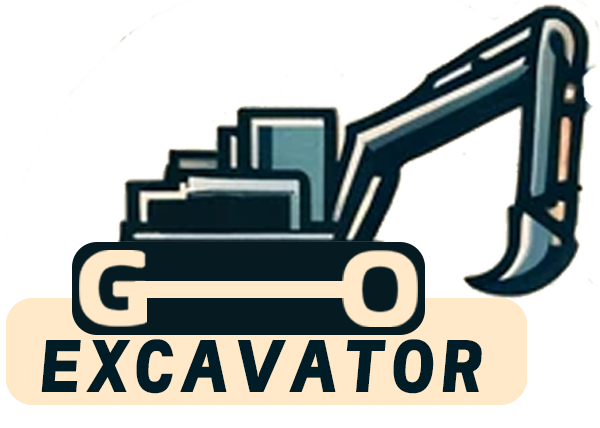
Excavators are indispensable machines in the construction and mining industries. They perform heavy-duty tasks that demand robust components and meticulous maintenance. Extending the service life of excavator parts not only reduces operational costs but enhances productivity and safety on the job site.
Understanding Your Excavator Parts
Before diving into maintenance and operational techniques, it’s essential to understand the components of your excavator and their functions.
Importance of Regular Maintenance
Regular maintenance is crucial for the longevity of excavator parts. It helps in early detection of wear and tear, preventing minor issues from escalating into major problems. Maintenance activities include inspecting hydraulic systems, checking for leaks, and ensuring that all moving parts are adequately lubricated.
Commonly Worn Excavator Parts
Some excavator parts are more prone to wear due to their constant use and exposure to harsh conditions. These include:
- Bucket Teeth and Cutting Edges: These parts are in constant contact with abrasive materials.
- Hydraulic Hoses and Seals: Subject to high pressure and can degrade over time.
- Tracks and Undercarriage Components: Bear the machine’s weight and are exposed to rough terrain.
- Pins and Bushings: Essential for the movement of the excavator’s arm and boom.
Understanding which parts are most vulnerable allows for targeted maintenance efforts.
Proper Usage Techniques
How you operate your excavator significantly impacts the lifespan of its parts.
Avoid Overloading
Overloading puts excessive stress on the excavator’s components, leading to premature wear. Always adhere to the manufacturer’s recommended load limits. Use the appropriate bucket size for the task, and avoid lifting materials that exceed the machine’s capacity.
Correct Operating Procedures
Operators should be trained to handle the excavator smoothly. Abrupt starts, stops, and directional changes can strain the hydraulic system and mechanical parts. Gentle movements reduce stress on the components and lower the risk of damage.
Regular Maintenance and Inspection
A proactive maintenance schedule is vital for extending the life of excavator parts.
Daily Inspections
Before starting work each day, perform a visual inspection of the excavator:
- Check for Leaks: Inspect hydraulic hoses and cylinders for signs of fluid leaks.
- Examine Tracks and Undercarriage: Look for excessive wear or damage.
- Test Controls: Ensure that all controls are responsive and functioning correctly.
- Lubricate Moving Parts: Apply grease to pins, bushings, and other joints as recommended.
Scheduled Maintenance
Follow the manufacturer’s maintenance schedule for more in-depth servicing:
- Oil and Filter Changes: Replace engine oil, hydraulic fluid, and filters at specified intervals.
- Component Replacement: Swap out worn parts before they fail.
- System Diagnostics: Use diagnostic tools to check the health of the excavator’s systems.
Lubrication and Cleaning
Proper lubrication minimizes friction between moving parts, reducing wear. Use the right type of lubricant as specified by the manufacturer. Regular cleaning removes dirt and debris that can cause abrasion and corrosion.

Use Quality Replacement Parts
When parts need replacement, the quality of the new components matters.
OEM vs. Aftermarket Parts
- OEM (Original Equipment Manufacturer) Parts: Designed specifically for your excavator model, ensuring compatibility and reliability.
- Aftermarket Parts: May be less expensive but can vary in quality.
Benefits of Quality Parts
Using high-quality parts:
- Enhances Performance: Ensures the excavator operates at optimal efficiency.
- Reduces Downtime: High-quality parts are less likely to fail unexpectedly.
- Increases Safety: Reliable components minimize the risk of accidents due to part failure.
Environmental Considerations
Operating conditions play a significant role in the wear of excavator parts.
Operating in Extreme Conditions
- Cold Weather: Low temperatures can make materials brittle and fluids viscous.
- Hot Weather: High temperatures can cause overheating and degrade lubricants.
- Dusty or Wet Environments: Increase the risk of contamination and corrosion.
Adjust maintenance practices to account for these conditions, such as using specialized lubricants or protective coatings.
Storage and Protection
When the excavator is not in use:
- Store Under Cover: Protects against weather elements.
- Secure the Machine: Prevent unauthorized use that could lead to misuse or damage.
- Periodic Start-Up: Running the machine occasionally prevents components from seizing.
Training and Operator Skill
The skill level of the operator directly affects the wear and tear on excavator parts.
Importance of Skilled Operators
Experienced operators understand how to use the machine efficiently and gently, reducing unnecessary stress on components.
Continuous Training
- Regular Training Sessions: Keep operators updated on best practices and new technologies.
- Safety Protocols: Emphasize the importance of following safety guidelines to prevent accidents that could damage the machine.
Extending the service life of excavator parts requires a combination of proper usage, regular maintenance, quality replacement parts, environmental awareness, and skilled operation.
A Comprehensive Guide to Buying a Excavator Second Hand
Purchasing a second-hand excavator can be a cost-effective solution for your construction or landscaping needs. However, buying used machinery comes with its own set of challenges and considerations. This comprehensive guide will walk you through [...]
Comprehensive Guide to Hyundai Mini Excavators: Features and Prices
Mini excavators have become indispensable tools in the construction and landscaping industries. Hyundai Construction Equipment, a global leader in heavy machinery, offers a range of mini excavators known for their reliability, efficiency, and advanced features. [...]
How to Extend the Service Life of Excavator Parts
Excavators are indispensable machines in the construction and mining industries. They perform heavy-duty tasks that demand robust components and meticulous maintenance. Extending the service life of excavator parts not only reduces operational costs but enhances [...]
Kymron Excavators: Innovative, Sustainable Construction Machinery
In the dynamic world of construction and heavy machinery, Kymron has emerged as a game-changer. Specializing in advanced excavator technology, Kymron is redefining industry standards with its commitment to innovation, efficiency, and sustainability. Company Overview [...]
Bulldozer vs. Wheeled Excavator: Which Machine is Better for Moving Soil?
Moving soil is a fundamental task in construction, landscaping, and earthmoving projects. Choosing the right machinery for the job can significantly impact efficiency, cost, and project timelines. Two of the most commonly used machines for [...]
Why Are Small Excavators Favored? A Comprehensive Guide
In the world of construction and landscaping, efficiency and versatility are key. Among the myriad of machinery available, small excavators have risen in popularity. But what makes them so favored? Introduction to Small Excavators Small [...]




